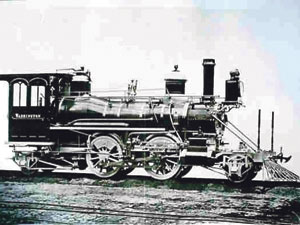On a Saturday in late June, Theresa Fawdray, Barry Kempton, Lynne King, Bruce and Mary Lambert, John Rhodes and Ed and Juliet Cooke followed a new segment of the Te Araroa trail south of Paekakariki. A sign warned about vertigo, but the gentle first part above the railway lulled us into complacency. The track then climbed skywards with zigzags and steep steps where it was best not to look down. With a clear sky, we had great views along the coast.
The trail ended at a viewpoint where local Friends of Te Araroa are planting shrubs. Work is advancing from the other end at Pukerua Bay, and walkers will soon be able to go right through.
The descent was better than some of us feared, but needed care. We lunched at an old quarry (after much discussion as to time and place), with drops of rain falling. At the water’s edge below, within yards of the highway, is the boiler of American-built K class locomotive K96, commissioned in 1878. The loco was dumped at Westfield, Auckland, about 1929, but its boiler—a Kiwi-built replacement—was used at Paekakariki until the late 1930’s and now rests on the coast.
Afterwards we walked the Camborne walkway around part of the Pauatahanui Inlet, then visited the site of the wartime US military camp, one of five in the Porirua area. We ended the day in a most un-tramping fashion at a cafe.
On 24 August, Derek Wilson (306 9722) will lead us from Cape Palliser lighthouse to Stone Wall. Anyone is welcome. Please telephone Derek by Thursday evening before the trip. General enquiries to Jenny Duggan 379 7644 or Ed Cooke 304 9497.
Railway information and photos from http://en.wikipedia.org/wiki/NZR_K_class_(1877)



